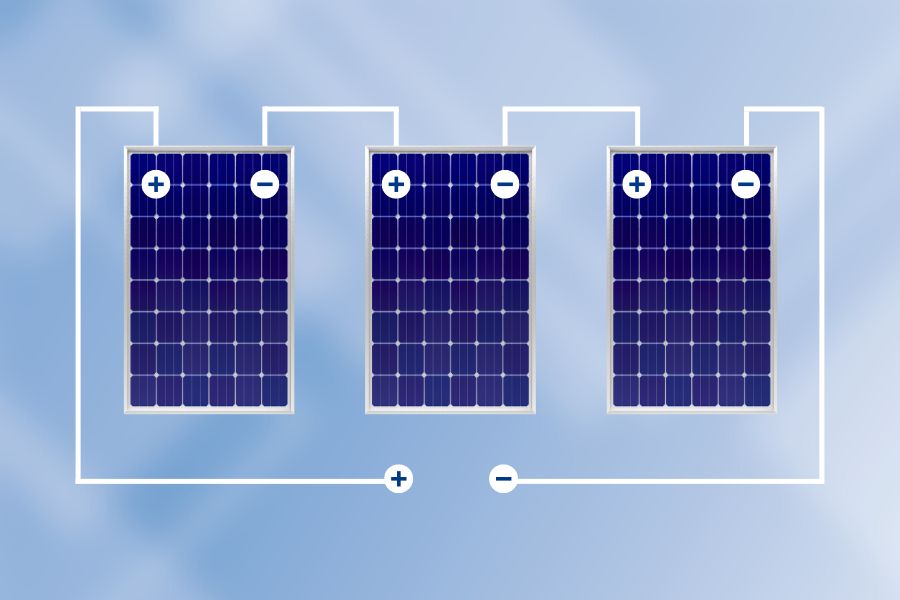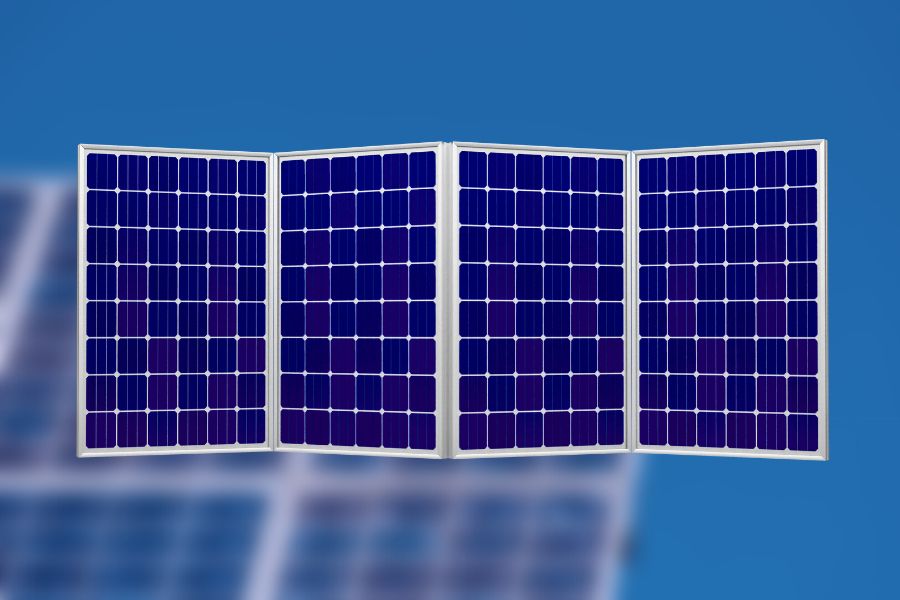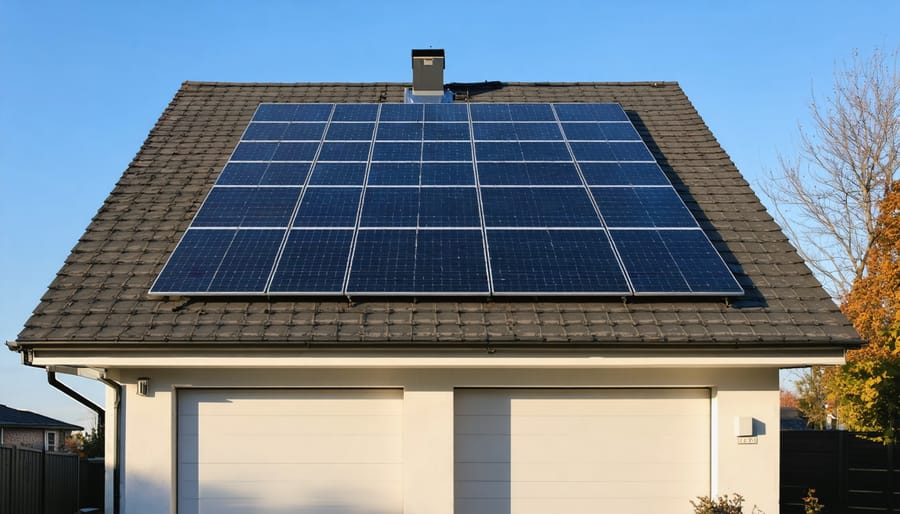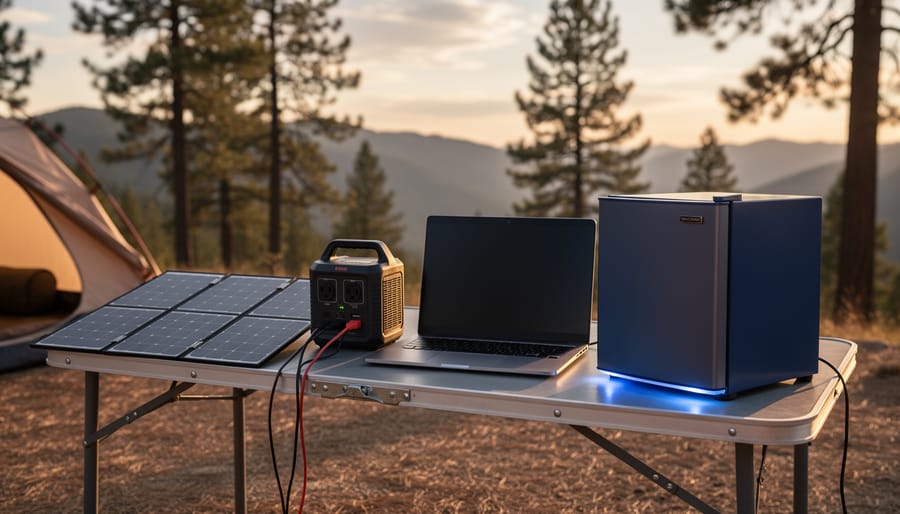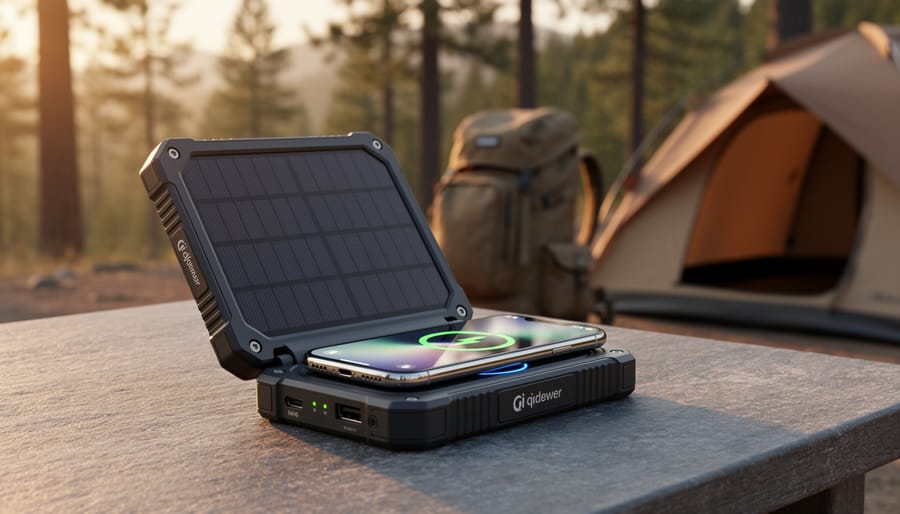Solar Panel Angle Calculator
Updated:
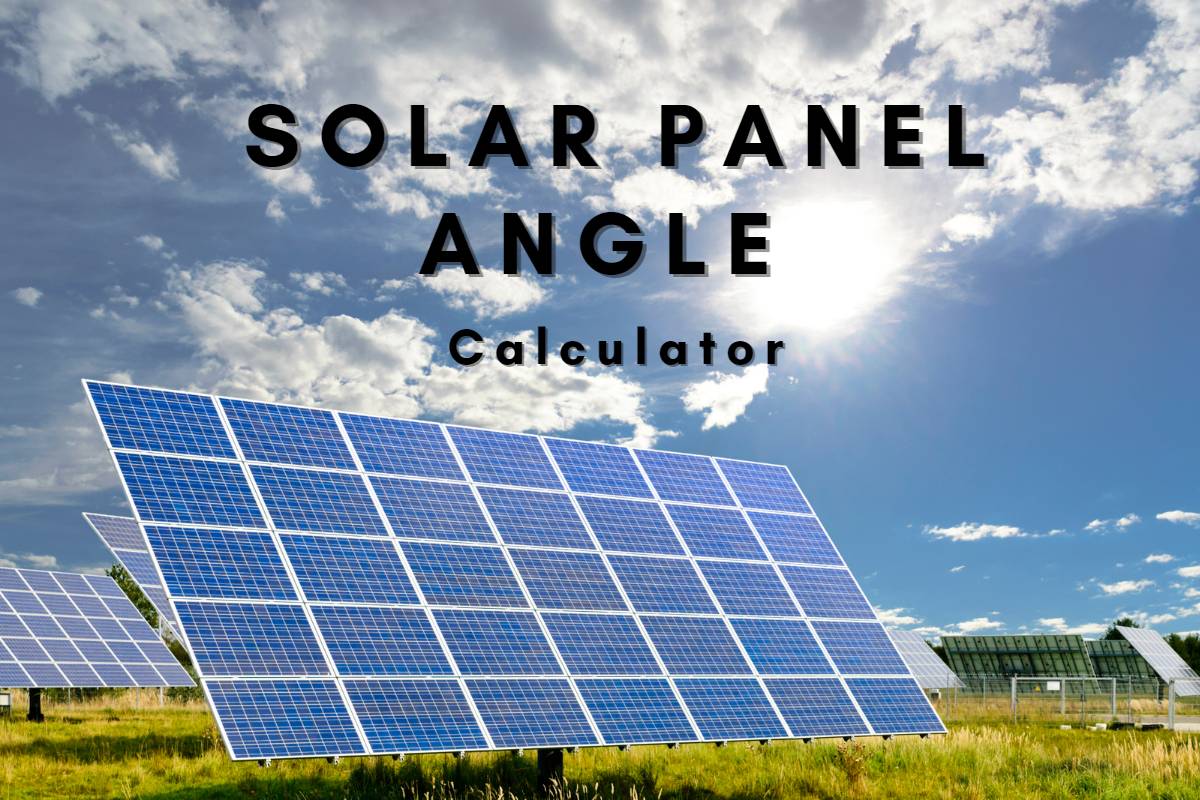
Your optimal year-round tilt angle:
° from horizontal
Your optimal tilt angles by season:
-
|
°
-
|
°
-
|
°
-
|
°
Your optimal tilt angles by month:
-
|
°
-
|
°
-
|
°
-
|
°
-
|
°
-
|
°
-
|
°
-
|
°
-
|
°
-
|
°
-
|
°
-
|
°
Note: To allow for rain to naturally clean solar panels, installers usually limit tilt angles to 10°.
- | °
- | °
- | °
- | °
- | °
- | °
- | °
- | °
- | °
- | °
- | °
- | °
- | °
- | °
- | °
- | °
Generally, the optimal orientation for any solar technology is when the sun’s rays are at maximum solar elevation angle (90 degrees) from them. In other words, when the sun’s rays shine directly on the surface of solar panels, the panels get the highest amount of solar energy.
However, because the sun moves around and the earth isn’t flat, the sun’s position from a solar panel will always vary. So, even if you position your solar panels in a way that places the sun at an elevation angle 90 degrees from them, the angle will eventually change.
Does this mean one will have to adjust their solar panel angle routinely? No. Instead, one can work with an optimal tilt angle – an angle that works most of the time.
What is Solar Panel Tilt Angle?
Solar panel tilt angle is the average optimum angle at which solar panels receive maximum irradiance from the sun.
While it varies across all locations around the world, the optimum tilt angle of solar panels is usually similar to the location latitude.
Besides varying with locations, the optimal tilt angle for a solar panel varies with seasons. Of course, since it varies with the seasons, it will vary monthly. Nonetheless, one can get an average optimal tilt angle that will work to a very high degree year-round.
How to Calculate Solar Panel Tilt Angle
There are multiple ways to calculate optimum tilt angles for solar panels. One of those ways is to use our solar panel angle calculator. Other methods include:
- Use Your Location’s Latitude
- Use the PVWatts® Calculator from the National Renewable Energy Laboratory (NREL)
- Use an Optimal Tilt Angle Formula
- Use a Solar Tilt Angles Chart
Using Our Solar Panel Angle Calculator
Below, we highlight how to figure out the optimal tilt angle for your solar system with our solar panel tilt calculator.
- Type your address, postal code, or city into the corresponding field. While typing, you’ll see a dropdown that shows you a list of addresses that might correspond to what you’re typing.
- From the dropdown, select the address that is closest to or the same as yours.
- Alternatively, you may click on the “Use Your Current Location” button, so the solar angle calculator gets your location from your browser’s location services.
- After entering your address, the solar angle calculator will return a result – the optimal tilt angle for solar panels in your location throughout the year.
- Besides the optimum tilt angle year-round, the solar panel orientation calculator will return monthly and seasonal optimal tilt angles.
Using Your Location (Rule of Thumb Method)
As mentioned before, the solar panel tilt angle is usually similar or not far off your location latitude. This is the basis of this method.
Quarterly and fixed optimal tilt angle
If you know your location’s latitude, you can calculate the optimum tilt angle for your solar panels using some rules of thumb:
- For most of the year, you can set your tilt angle to your latitude.
- In the winter months, your tilt angle would be your latitude plus 15°.
- In summer months, your tilt angle would be your latitude minus 15°.
If our latitude is 34.82, for instance, we’ll tilt our solar panel at angle of 34.82° in fall and spring. But in winter, the tilt angle would be 34.82 + 15 = 49.82°. Then in summer, the ideal angle would be 34.82 – 15 = 19.82°.
The summer months subtraction and winter months addition will come in handy if your adjust your solar panel’s quarterly. But if your solar array is fixed, you may just work with the latitude as your fixed angle.
Monthly Optimal Tilt Angle
If you would like to adjust your solar panel tilt angle monthly, you can reduce the latitude by 5° every month from the start of spring till June. Then from the end of summer to December, you’d increase the latitude by 5° every month.
Basically, the lowest tilt angle should be in June while the highest would be in December.
Using latitude 34.82 from the previous section, since December would have the highest angle, its tilt angle would be 49.82°. But from January to June, the following would be our best angles:
- January- 44.82°
- February – 39.82°
- March – 34.82°
- April – 29.82°
- May – 24.82°
- June – 19.82°
Then from July to December, the optimum tilt angles would be:
- July – 24.82°
- August – 29.82°
- September – 34.82°
- October – 39.82°
- November – 44.82°
- December – 49.82°
These formulas are pretty handy when a solar panel orientation calculator is not within reach or when you want quick estimations.
How Do I Know My Latitude?
One easy way to know your location’s latitude is to check a map – (Apple Maps or Google Maps should work for this).
Apple Maps
When you open the Apple Maps app on your phone, pull the bottom menu all the way up. Then click on “Mark My Location” from the options.
After clicking on Mark My Location, some details will appear in the bottom menu. Pull the bottom menu all the way up once again. Under “Details”, you’ll see “Coordinates”. Under “Coordinates”, you’ll see two values separated by a comma. The first value is your latitude.
Google Maps
Open the Google Maps App on your phone. Enter your address into the search bar and click search.
Next, pull the bottom menu all the way up. Amongst the details shown in the bottom menu, you’ll find two decimal values in parentheses. The first of those two values is your latitude.
Using the PVWatts Calculator
The PVWatts Calculator built by the NREL offers a pretty easy way to figure out your solar panels’ optimum tilt angle.
Beyond being easy to use, it is pretty detailed.
How to Use PVWatts to Find Your Optimal Tilt Angle
Once you are on the website, enter your address in the “Get Started” input field. Then click the “Go” button.

After clicking on the “Go” button, you’ll be taken to a new page. On this new page, click on “System Info”.

Under the “System Info” tab, adjust the values as necessary, especially the tilt angle.
You should alter the tilt angle and azimuth angle to see the combination that offers the best solar power production year-round.
You can also change the solar system size as needed. Then you may choose a module type, from standard to premium or thin-film.
If your solar panels do not use a fixed open rack mount, you can check one of the four other options to see which is fitting. The other options are roof mount, 1-axis tracking, 1-axis backtracking, and 2-axis tracking.
The PVWatts calculator comes with a system loss calculator. So, you can estimate the expected solar power losses when the solar panels are in use.
If you feel there are other parameters vital to your estimation, click on “Advanced Parameters”. Then once you are done entering with the details under the System Info tab, move to the Results tab.

Under the Results tab, you’ll see various details, including estimated monthly solar irradiation and AC energy generation. You’ll also see your location details, DC capacity factor, and other details you provided under the System Info tab.

Using an Optimal Tilt Angle Formula
There are various tilt angle formulas out there to work with. But we’ll go over two of them: a modified Rule of Thumb formula and a formula from a Stanford Research.
Modified Formula
Unlike the actual method, this modification uses a different set of constants for estimating the solar panel tilt angle.
For one, instead of just subtracting 15° from latitude in summer months, the formula multiplies latitude by 0.9 then subtracts 23.5°:
optimal solar panel angle in summer = (latitude x 0.9) – 23.5°
Then in winter, instead of adding 15° to the latitude, the formula multiplies latitude by 0.9 then adds 29°:
optimal solar panel angle in winter = (latitude x 0.9) + 29°
In fall and spring, instead of using the latitude as is, you’ll subtract 2.5°:
optimal solar panel angle in fall and spring = latitude – 2.5°
Example
Using our latitude from the PVWatts calculator method – 41.29°, we’ll try out the formulas above.
In fall and spring, the optimal angle for our solar panels would be:
= 41.29 – 2.5 = 38.79°
In winter, the optimum angle for our solar panels would be:
= (41.29 x 0.9) + 29 = 37.16 + 29 = 66.16°
In summer, the optimum able for our solar panels would be:
= (41.29 x 0.9) – 23.5 = 37.16 – 23.5 = 13.66°
Optimal Tilt Angle Formulas From Stanford
The optimal tilt angle formulas from Stanford are highly accurate, thanks to the fact that the data used in creating them come from the NREL’s PVWatts calculator.
The two formulas produced from the referenced research calculate tilt angle based on your location in any of the latitudinal hemispheres.
If located in the Northern Hemisphere, the formula for optimal panel tilt angle would be:
Optimal solar panel tilt angle = 1.3793 + α(1.2011 + α(-0.014404 + α0.000080509))
where α is latitude.
For locations in the Southern Hemisphere, the formula for calculating the optimal tilt angle for solar panels is:
Optimal solar panel tilt angle = -0.41657 + α(1.4216 + α(0.024051 + α0.00021828))
where α is latitude.
If you know your latitude, you can readily tell whether you are in the Northern or Southern Hemisphere. In the Northern Hemisphere, latitude is greater than zero (not negative). But in the Southern Hemisphere, latitude is less than zero.
Example 1
Let’s try the formulas out using our latitude, 41.29°. Of course, since the latitude is greater than the zero, out location is the Northern Hemisphere. So, we’ll use the Northern Hemisphere formulae:
Optimum angle for our solar panels = 1.3793 + 41.29(1.2011 + 41.29(-0.014404 + (41.29 x 0.000080509)))
= 1.3793 + 41.29 (1.2011 + 41.29(-0.011)) = 1.3793 + 41.29(1.2011 – 0.45419)
= 1.3793 + 41.29(0.74691) = 1.3793 + 30.84 = 32.2°
So, for our location, we can tilt our angle at 32.2° year-round. If you try this value out with the NREL angle calculator (PVWatts), you’ll find that it offers one of the highest annual energy generation for that location.
We may choose to vary this angle quarterly or monthly. Going by what we stated earlier, as we approach the summer, we can reduce the angle. But when the winter gets nearer, we can increase the angle.
Example 2
If our location was in the Southern Hemisphere, say Buenos Aires, Argentina, our latitude would be -20.99. So, to calculate the ideal solar panel tilt angle, we’ll use the Southern Hemisphere formula:
Ideal solar panel tilt angle = -0.41657 – 20.99(1.4216 – 20.99(0.024051 + (-20.99 x 0.00021828)))
= -0.41657 – 20.99(1.4216 – 20.99(0.024051 – 0.0046))
= -0.41657 – 20.99(1.4216 – 20.99(0.019451))
= -0.41657 – 20.99(1.4216 – 0.408)
= -0.41657 – 20.99(1.0136)
= -0.41657 – 21.275
= -21.69157°
So, for latitude -20.99°, we can tilt our solar panel at a 21.69° angle year-round. If you also try this value out with the NREL angle calculator (PVWatts), you’ll find that it offers one of the highest annual energy production for Buenos Aires, Argentina.
Using a Solar Tilt Angle Chart
You’ll find various charts online showing details about the best tilt angles for solar panels in specific locations. Some of these charts share details about the optimum tilt angle year-round, in the summer, and in the winter. Some may even add details about the solar zenith angle.
Typically, these solar charts may only contain information about popular locations. But some are pretty inclusive.



